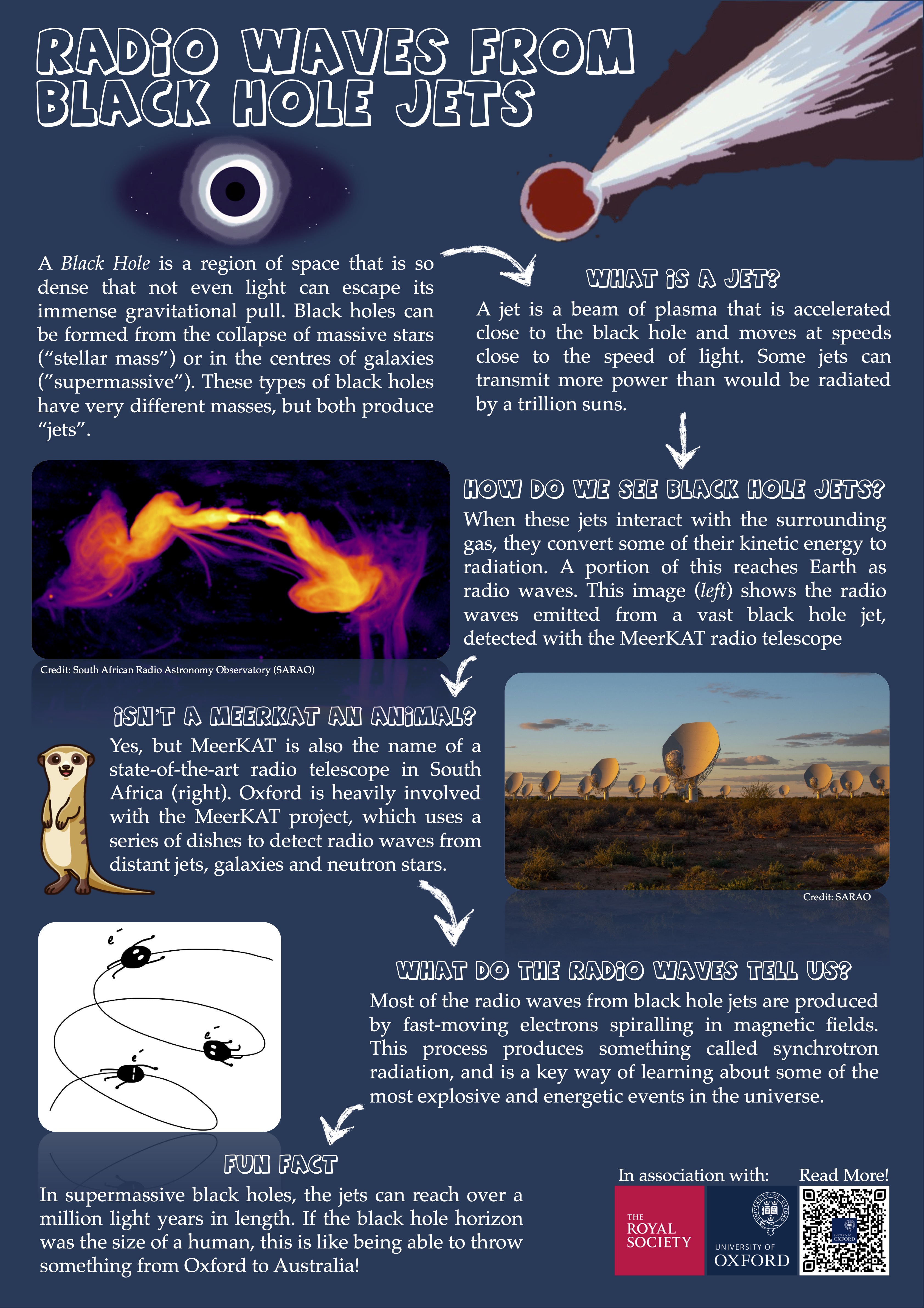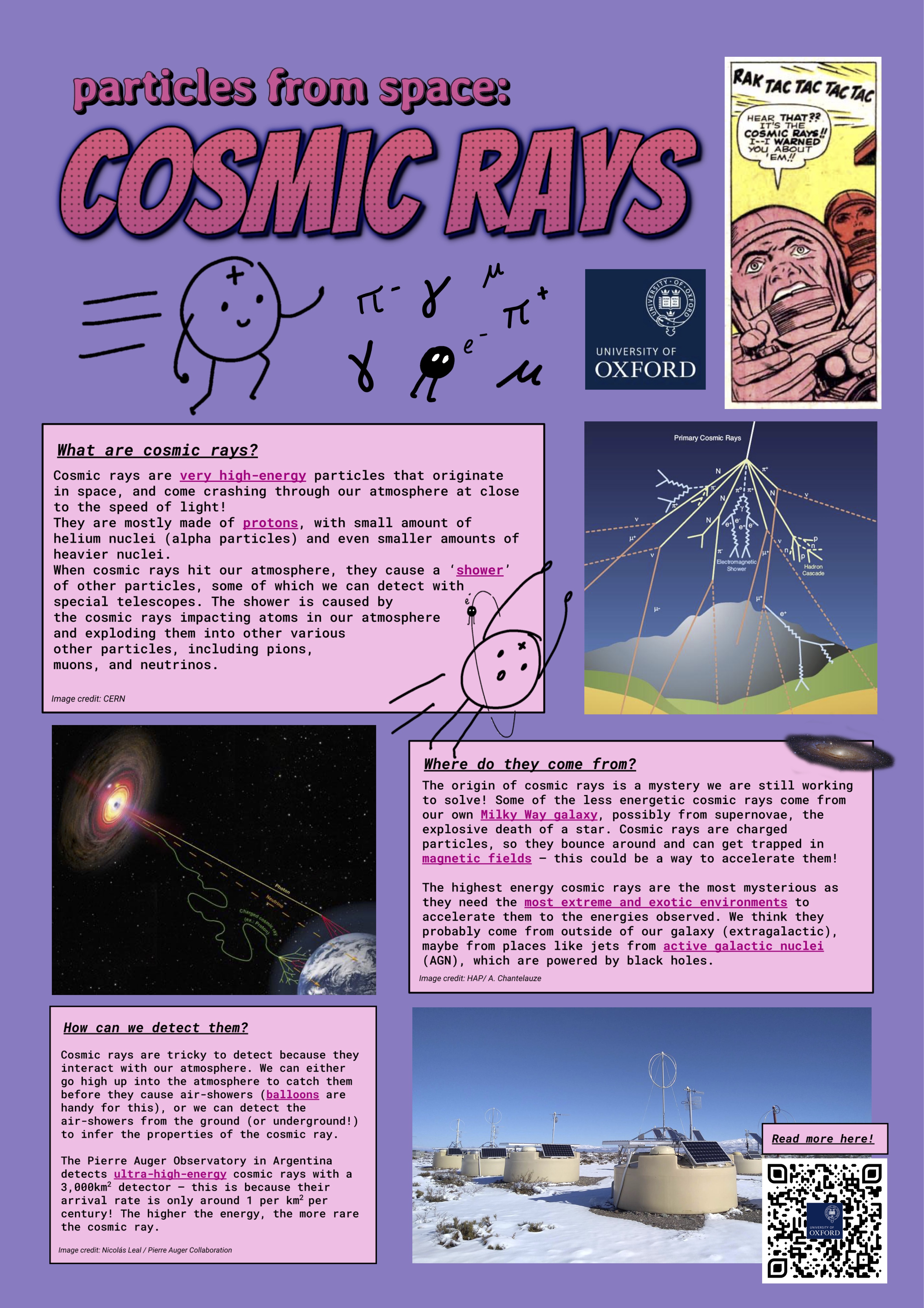Want to learn more about cosmic rays and black holes? You've come to the right place! This page contains links and further reading to explain some of the fascinating physics.
You also find about the research we do at Oxford, and download our "explainer" posters below.
Cosmic Rays
Cosmic rays are high-energy particles bombarding the Earth's atmosphere. We don't know for sure where they come from!
Read more:
Find our about cosmic rays with the Pierre Auger observatory.
Black Hole Jets
A Black Hole is a region of space that is so dense that not even light can escape its immense gravitational pull. Black holes can be formed from the collapse of massive stars (“stellar mass”) or in the centres of galaxies (”supermassive”). These types of black holes have very different masses, but both produce “jets”.
A jet is a beam of plasma that is accelerated close to the black hole and moves at speeds close to the speed of light. Some jets can transmit more power than would be radiated by a trillion suns.
Read more:
What are black hole jets made of?
Watch James' simulations of black hole jets
Watch Dr Becky's video on radio jets with the low-frequency array
Posters




